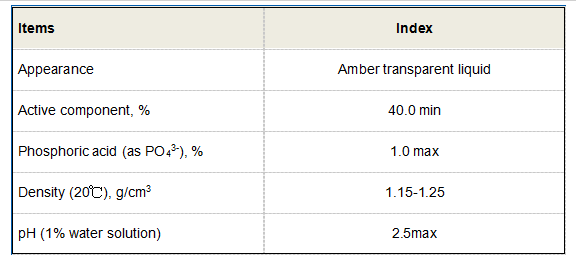poly acrylic amide
Polyacrylamide An Overview of its Properties and Applications
Polyacrylamide (PAM) is a water-soluble polymer composed of acrylamide subunits. It is widely recognized for its diverse applications across various industries, primarily due to its ability to enhance the performance of several processes through its unique properties. This article aims to provide a comprehensive overview of polyacrylamide, discussing its synthesis, properties, applications, and safety considerations.
Synthesis and Properties
Polyacrylamide is synthesized from acrylamide monomers through a process known as polymerization. This can occur via several methods, including free-radical polymerization, which involves the initiation of the reaction through the introduction of free radicals. The degree of polymerization and the molecular weight of polyacrylamide can be manipulated by adjusting the concentration of acrylamide and the reaction conditions, which leads to polymers with different viscosities and properties.
One of the most remarkable characteristics of polyacrylamide is its high water solubility, which allows it to form gel-like structures in aqueous solutions. Additionally, PAM exhibits excellent thickening, flocculating, and stabilizing properties, making it a crucial component in various formulations. The presence of functional groups in polyacrylamide also enables it to interact with other substances, facilitating its use in diverse applications.
Applications
The versatility of polyacrylamide allows it to be utilized in numerous fields
1. Water Treatment One of the largest markets for polyacrylamide is in water treatment. PAM is widely used as a flocculant to aggregate suspended particles in water, making the separation of contaminants easier. It helps clarify drinking water and is also used in wastewater treatment processes, improving the efficiency of solid-liquid separation.
poly acrylic amide

2. Agriculture In agriculture, polyacrylamide is used to enhance soil moisture retention. It improves the structure of the soil by helping bind soil particles together and reducing erosion. This polymer is especially beneficial in arid regions, where water conservation is crucial for crop production.
3. Oil and Gas Industry Polyacrylamide is employed in enhanced oil recovery processes. It is used to increase the viscosity of water injected into oil reservoirs, improving the process of extracting oil by reducing the mobility of water and allowing for more efficient displacement of oil.
4. Cosmetics and Personal Care In the cosmetic industry, polyacrylamide is utilized as a thickening agent and stabilizer in various formulations, including creams and lotions. Its ability to form gels contributes to the textural and sensorial qualities of these products.
5. Biomedical Applications Polyacrylamide gels are extensively used in biological research due to their ability to separate biomolecules through gel electrophoresis. In the medical field, they are also explored for drug delivery systems and tissue engineering.
Safety Considerations
While polyacrylamide is generally considered safe for many applications, it is essential to note that the monomer acrylamide is a neurotoxin and a suspected carcinogen. Therefore, safety measures must be taken during the handling and processing of polyacrylamide, especially in industrial settings. It is crucial to adhere to regulatory guidelines and safety data sheets (SDS) to mitigate any health risks associated with exposure to acrylamide.
Conclusion
In conclusion, polyacrylamide is a multifunctional polymer with wide-ranging applications in water treatment, agriculture, the oil and gas industry, cosmetics, and biomedical research. Its unique properties, such as high water solubility and excellent thickening abilities, make it an invaluable component across these sectors. However, due care should be exercised to ensure safe handling and minimize exposure to harmful acrylamide monomers. With ongoing research and development, the utility of polyacrylamide is likely to expand, possibly leading to new and innovative applications in the future.
-
Pbtc Scale InhibitorPBTC: A Scale Protector for Industrial Water TreatmentNewsAug.05,2025
-
Organic Phosphonate: An Efficient Defender in the Field of Scale InhibitionNewsAug.05,2025
-
Hydrolyzed Polymaleic Anhydride: Green Pioneer in Scale Inhibition FieldNewsAug.05,2025
-
PAPEMP Polyamino Polyether Methylene Phosphonic Acid For SaleNewsAug.05,2025
-
Flocculant Water Treatment: A Pioneer in Purification in the Field of Water TreatmentNewsAug.05,2025
-
Benzyl Isothiazolinone: An Efficient and Broad-Spectrum Antibacterial Protective GuardNewsAug.05,2025





